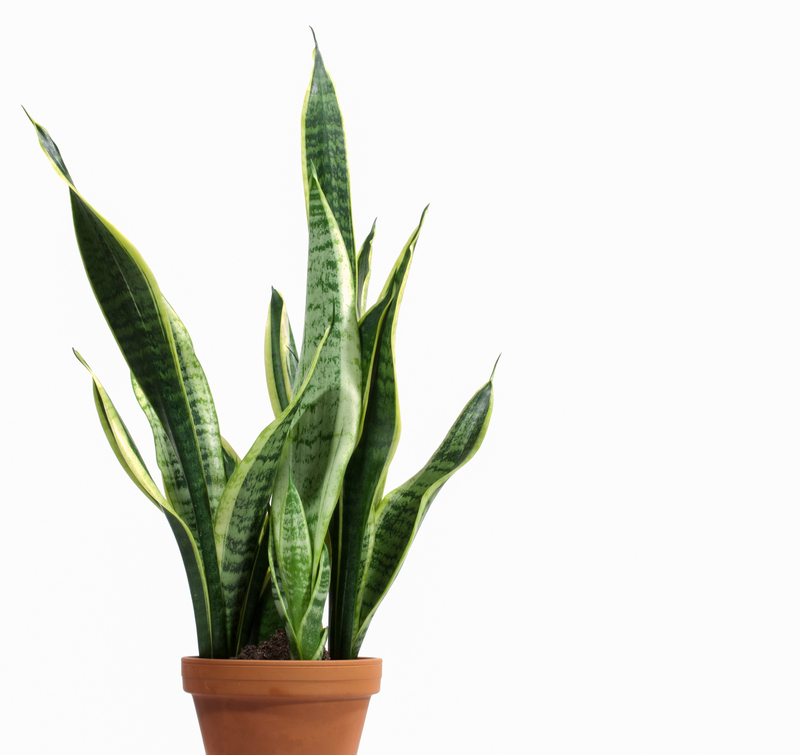Adapt and Protect Your Lawn from Summer Drought Stress the Smart Way
Keeping your lawn lush, green, and healthy during the hottest months requires more than just routine care. Learning how to adapt and protect your turf from summer drought stress the smart way is crucial for maintaining a vibrant yard even in the harshest weather. Drought can take a heavy toll on lawns, but with the right knowledge and strategies, you can help your grass not only survive but thrive. This article covers practical tips, best practices, and eco-friendly solutions to prepare your lawn for extended dry spells and heatwaves.
Understanding Drought Stress in Lawns
Drought stress occurs when your lawn loses more water than it can replenish, leading to stunted growth, brown patches, and, eventually, grass death. Understanding the signs and underlying causes of drought stress is the first step in effective drought-resistant lawn care.
Causes of Summer Drought Stress:
- High temperatures and intense sunlight increase evaporation rates from soil and grass blades.
- Low rainfall provides insufficient natural watering during crucial growing periods.
- Poor soil composition (such as sandy or compacted soil) limits water retention.
- Improper lawn maintenance weakens grass, reducing its ability to handle drought stress.
Drought stress often manifests as wilting, discoloration, and patchy turf. Promptly addressing these symptoms minimizes damage and gives your lawn the best chance for recovery.

The Smart Way to Prepare Your Lawn for Drought
Preparation is the cornerstone of summer drought lawn protection. By taking proactive steps before the heat arrives, you can significantly reduce the risk of damage and ensure a resilient, healthy lawn.
1. Choose the Right Grass Species
Selecting drought-tolerant grass types is one of the most effective ways to adapt your lawn to summer stress. Some grass varieties have deeper roots and stronger drought resistance than others.
- Bermuda grass: Excellent drought tolerance, ideal for hot climates.
- Zoysia grass: Uses water efficiently and thrives in well-drained soil.
- Tall fescue: Deep root system and good performance in transitional zones.
- Buffalograss: Extremely resilient in dry, arid conditions.
If you're planning to overseed or establish a new lawn, consider mixing in these drought-resistant grasses for greater resilience and lower maintenance.
2. Improve Soil Health and Structure
Healthy soil is the foundation of a drought-proof lawn. Soils rich in organic matter retain moisture better and support deep root growth.
- Test your soil: Use a soil test kit to check pH and nutrient levels.
- Add compost or organic matter: This increases the soil's water-holding capacity and supplies essential nutrients.
- Aerate your lawn: Aeration breaks up compacted soil, allowing water to penetrate more deeply.
Tip: Aim to aerate your lawn in spring or early fall to minimize stress during the peak of summer heat.
3. Smart Watering Strategies
Watering wisely is key to protecting lawns from drought. Overwatering or watering at the wrong time can waste resources and even encourage disease.
Follow these smart watering tips:- Water deeply and infrequently: Deep watering encourages grassroots to grow deeper, making the lawn more drought-tolerant. Aim for 1-1.5 inches of water per week (including rainfall).
- Water early in the morning: Watering between 5:00-9:00 a.m. reduces evaporation and helps prevent fungal diseases.
- Avoid watering in the evening: This can promote disease in warm, wet conditions.
- Use a rain gauge: Monitor natural rainfall to adjust irrigation schedules accordingly.
Pro tip: Install smart irrigation controllers that automatically adjust watering schedules based on weather conditions, saving water and money while keeping your lawn protected from drought.
Adapt Your Lawn Care Routine for Drought Resilience
Drought preparation doesn't end with soil and watering. Adjusting your lawn care practices can make a significant difference in how well your turf handles seasonal stress.
1. Mowing Techniques for Drought-Stressed Lawns
- Raise your mower blade: Cutting grass higher (3-4 inches) shades the soil, reduces water loss, and encourages deeper roots.
- Mow less frequently: Allow grass to grow taller during drought to boost resilience and water retention.
- Keep blades sharp: Dull blades cause ragged cuts, increasing water loss and susceptibility to disease.
- Leave clippings on the lawn: Mulched clippings return moisture and nutrients to the soil.
2. Fertilization and Lawn Nutrients
Fertilizing appropriately is essential for maintaining a healthy, drought-resistant lawn.
- Avoid heavy fertilization during drought: Synthetic fertilizers can burn stressed grass and encourage growth at the wrong time.
- Opt for slow-release fertilizers: These provide steady nutrition without excessive top growth.
- Incorporate organic amendments: Compost or biochar improves soil structure and moisture retention.
Remember: Proper timing and moderate feeding are key to boosting your lawn's drought defenses naturally.
3. Mulching and Ground Cover
Protect bare soil with mulch or drought-tolerant ground covers:
- Use grass clippings or shredded leaves: Mulch conserves soil moisture and keeps roots cooler.
- Plant creeping thyme or clover: These low-water ground covers add color and help shade the soil.
Integrated Eco-Friendly Lawn Care Solutions During Drought
Smart, sustainable lawn care combines conservation, adaptation, and ecological responsibility. Adopting eco-friendly practices can help you protect your lawn from drought stress while reducing your environmental footprint.
1. Xeriscaping Principles
Xeriscaping refers to landscaping designed to minimize water use. Consider these approaches for a more drought-adapted yard:
- Reduce lawn area: Replace hard-to-irrigate areas with native plants, rock gardens, or permeable pathways.
- Select water-wise plants: Native and drought-tolerant varieties require less irrigation and maintenance.
- Group plants by water needs: This allows for more efficient irrigation.
2. Rainwater Harvesting
Catching and using rainwater is a smart way to supplement irrigation during dry spells:
- Install rain barrels or cisterns: Collect water from gutters to use during dry periods.
- Direct downspouts towards trees and garden beds: Maximize water absorption where it's needed most.
3. Smart Irrigation Technologies
- Soil moisture sensors: These tools help you water only when necessary.
- Drip irrigation: Delivers water directly to roots, reducing evaporation and runoff.
How to Recognize and Revive a Drought-Stressed Lawn
Catching drought stress early makes a big difference in your recovery efforts. Here's how to identify and fix common issues:
Signs Your Lawn Is Suffering:
- Footprints and mower tracks linger on the grass instead of springing back.
- Color fades from green to bluish-gray or brown.
- Grass blades curl or wilt, with slow growth or bare patches.
Revival Strategies
- Water deeply but gradually; flooding a dry lawn can cause runoff and waste water.
- Avoid heavy use: Minimize foot traffic and mowing during stress periods.
- Re-seed thin or bare patches: Use drought-tolerant seed blends in early fall for best results.
When to Seek Professional Help
If your lawn doesn't recover after several weeks of improved watering and care, consult a local turf professional. They can assess soil, diagnose pests or diseases, and recommend specific recovery steps tailored to your region's climate.

Frequently Asked Questions About Summer Drought Lawn Care
Q1: How often should I water my lawn during a drought?
A: Water deeply 1-2 times per week, aiming for a total of 1-1.5 inches (including rainfall). Early morning is best. Adjust frequency based on soil type, grass species, and weather.
Q2: Should I fertilize during drought?
A: Avoid heavy fertilization during drought. Instead, use a slow-release or organic fertilizer applied lightly in spring or fall.
Q3: Is it OK to let my lawn go brown in summer?
A: Yes. Most cool-season grasses enter dormancy and turn brown during extreme heat or drought as a survival mechanism. They typically recover when water and temperatures return to optimal levels.
Q4: Can I aerate and seed a stressed lawn in summer?
A: It's best to wait until fall or early spring for aeration and seeding, as these practices can further stress turf during peak heat.
Conclusion: Protect Your Lawn from Summer Drought the Smart Way
Adapting and protecting your lawn from summer drought stress requires forward-thinking, eco-friendly strategies, and attentive care. By preparing your soil, choosing the right grass species, adjusting maintenance routines, and investing in smart irrigation, you can transform your yard into a resilient oasis--even during the hottest, driest months.
Remember: The secret to a healthy lawn is a holistic approach--nourishing the soil, watering wisely, and embracing low-maintenance, drought-tolerant landscaping techniques.
Make this the year you outsmart summer drought and enjoy a beautiful, thriving lawn all season long!
- Test your soil and improve organic matter.
- Choose drought-tolerant grasses for your region.
- Water efficiently with smart irrigation systems.
- Raise your mowing height and mulch clippings.
- Embrace eco-friendly landscaping and rainwater harvesting.
For more expert lawn care advice and tips on protecting your yard from drought, keep exploring our site and stay ahead of the season's toughest challenges!